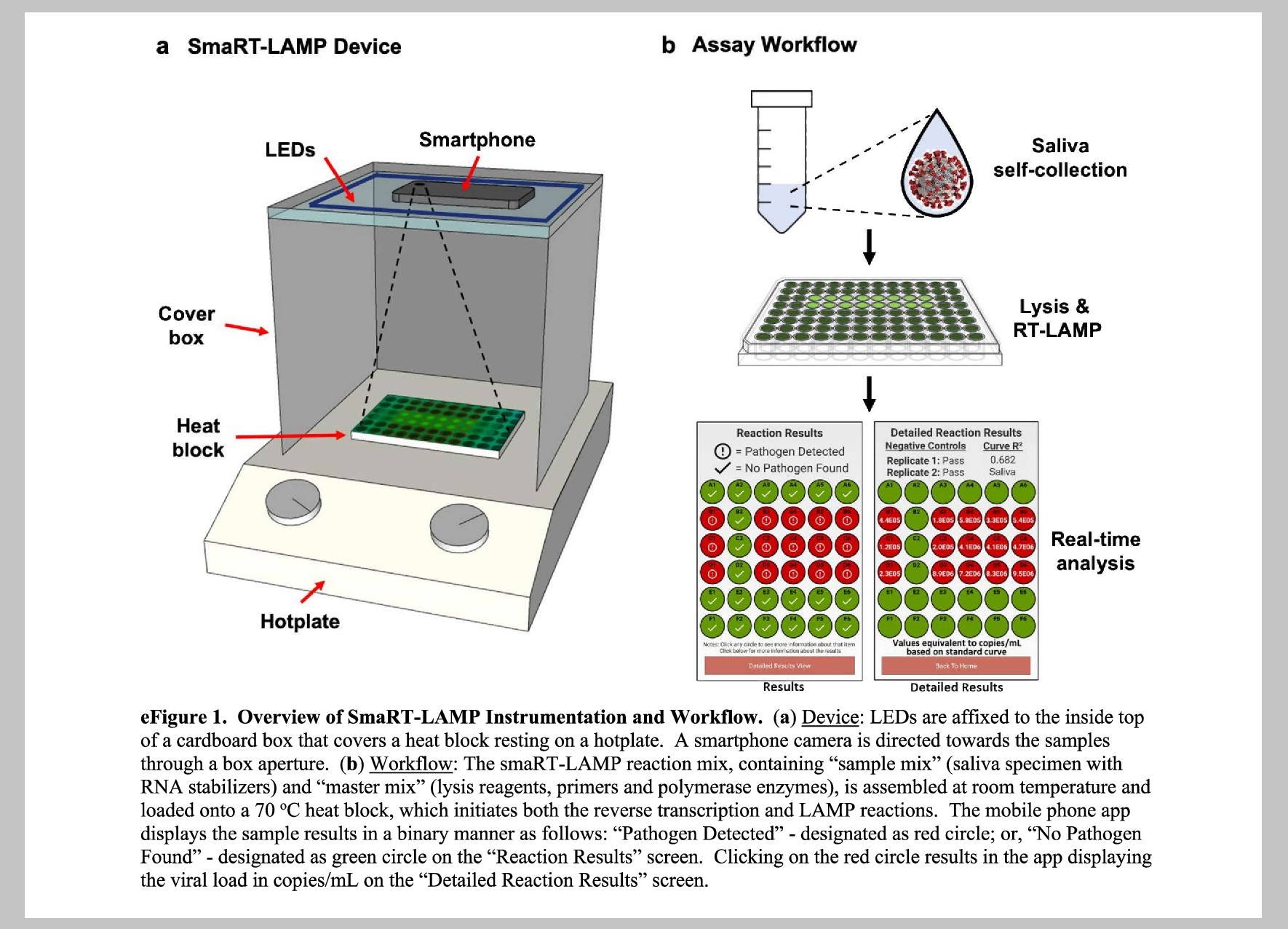As different variants of COVID are appearing globally, researchers are finding different ways to cope with the difficulties faced by the public. One of which is getting tested to know whether you are infected with COVID-19 or not. PCR tests are expensive and time consuming.
However researchers have developed a much easier way to fight against the difficulties faced by the public because of COVID-19. With Omicron’s arrival on the horizon, a research team from the University of California led by Prof. Michael Mahan, Charles Samuel and David Low have developed a much cheaper, faster and an accurate result providing COVID test system. This system which will now decrease the amount of time and resources needed for a COVID test at a clinic which cost more than $20 or at-home tests that are even more expensive, will soon cost you only $7. It is not just cheaper but drastically cuts down the time consumed by PCR tests, as this new system will give you the result of your test in just 25 minutes.
This system which is called ‘SmaRT-LAMP’ requires your smartphone, cardboard box, hot plate, LED lights and the reactive solution from the kit. The testing system also requires you to download an app called ‘Bacticount’ on your phone.
Here’s how the system works; First and foremost, make sure you have good light over the system, then you’ll need to place the cardboard box over the hot plate, the RT-Lamp will go on the heat block. Then, you’ll need to place your saliva sample on the testing kit and then drop the reactive solution into it. The reactive solution which should be recorded by the rear camera of your smartphone will change colors. The app will analyze the time taken and the color changed by the solution to prepare the results. If the result is positive, the solution is supposed to turn bright red.
One of the drawbacks of this new smart and cheap system is that ‘Bacticount’, the team’s app, is only compatible on Samsung Galaxy S9. More support to other mobile brands is needed to develop more convenient results on other smartphones.
Till now, researchers have tested the kit on a very small set of people but yet more development is needed before it could be deployed. The research was funded by National Institutes; Santa Barbara Cottage Hospital and U.S. Army Combat Capabilities Development Command's Army Research Laboratory.
Read next: Report shows how different social media applications affect your quality and time of sleep
However researchers have developed a much easier way to fight against the difficulties faced by the public because of COVID-19. With Omicron’s arrival on the horizon, a research team from the University of California led by Prof. Michael Mahan, Charles Samuel and David Low have developed a much cheaper, faster and an accurate result providing COVID test system. This system which will now decrease the amount of time and resources needed for a COVID test at a clinic which cost more than $20 or at-home tests that are even more expensive, will soon cost you only $7. It is not just cheaper but drastically cuts down the time consumed by PCR tests, as this new system will give you the result of your test in just 25 minutes.
This system which is called ‘SmaRT-LAMP’ requires your smartphone, cardboard box, hot plate, LED lights and the reactive solution from the kit. The testing system also requires you to download an app called ‘Bacticount’ on your phone.
Here’s how the system works; First and foremost, make sure you have good light over the system, then you’ll need to place the cardboard box over the hot plate, the RT-Lamp will go on the heat block. Then, you’ll need to place your saliva sample on the testing kit and then drop the reactive solution into it. The reactive solution which should be recorded by the rear camera of your smartphone will change colors. The app will analyze the time taken and the color changed by the solution to prepare the results. If the result is positive, the solution is supposed to turn bright red.
One of the drawbacks of this new smart and cheap system is that ‘Bacticount’, the team’s app, is only compatible on Samsung Galaxy S9. More support to other mobile brands is needed to develop more convenient results on other smartphones.
Till now, researchers have tested the kit on a very small set of people but yet more development is needed before it could be deployed. The research was funded by National Institutes; Santa Barbara Cottage Hospital and U.S. Army Combat Capabilities Development Command's Army Research Laboratory.
Read next: Report shows how different social media applications affect your quality and time of sleep

